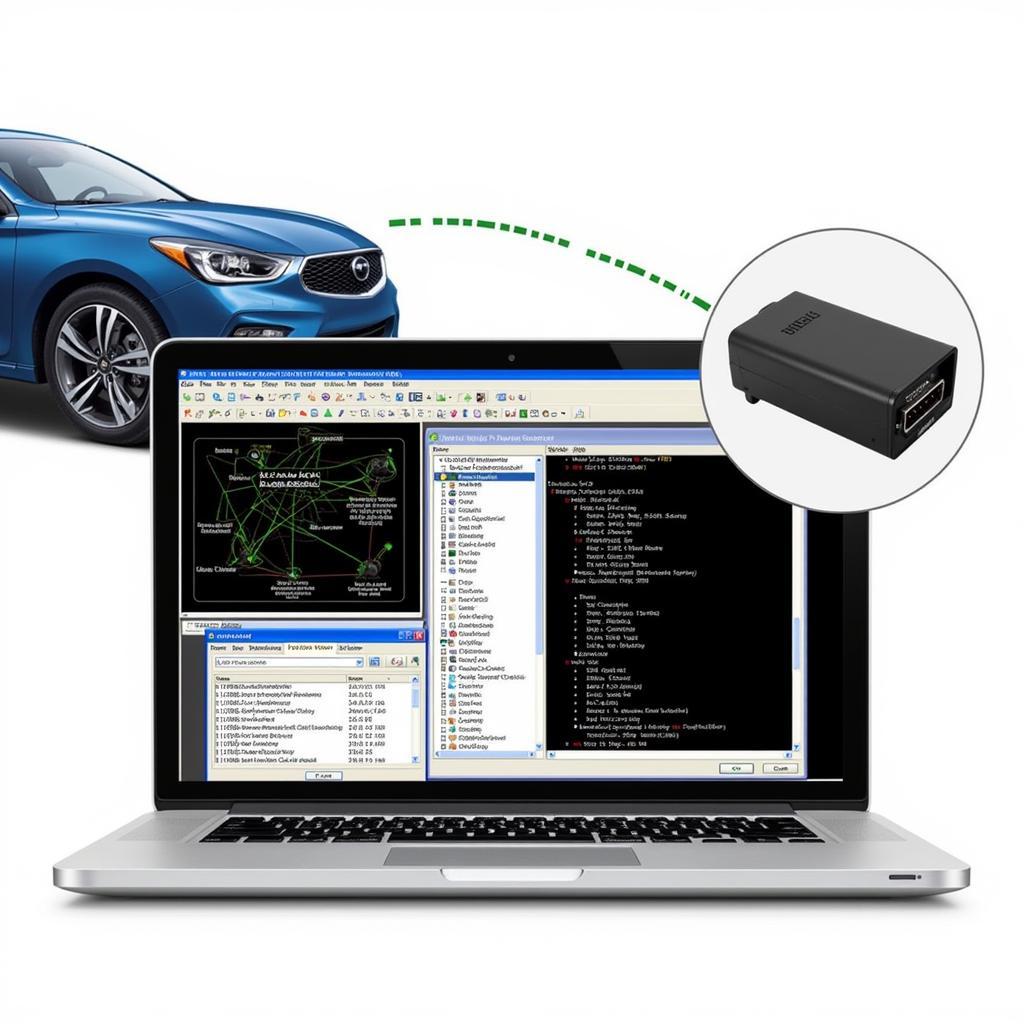Installing VCDS (Vag-Com Diagnostic System) on a Windows 10 64-bit system is a straightforward process that allows you to diagnose and troubleshoot issues with your Volkswagen, Audi, Seat, or Skoda vehicle. This guide provides a comprehensive walkthrough, ensuring you can successfully set up VCDS and start using it. After completing the VCDS installation, you’ll have a powerful tool at your fingertips. Similar to vcds driver, the installation process is crucial for proper functionality.
Understanding how to install VCDS on Windows 10 64 bit is essential for any DIY enthusiast or professional mechanic working with VAG vehicles. This software provides detailed access to various vehicle control modules, allowing you to read and clear fault codes, monitor live data, perform adaptations, and more. This detailed guide will cover everything from system requirements and driver installation to software configuration and initial setup.
System Requirements for VCDS Installation
Before you begin, ensure your Windows 10 64-bit system meets the following requirements:
- Operating System: Windows 10 (64-bit) is recommended. While older versions might work, compatibility isn’t guaranteed.
- Hardware: A standard PC or laptop with a USB port.
- Internet Connection: Required for driver updates and some VCDS features.
Step-by-Step Guide to Installing VCDS
Follow these steps to install VCDS on your Windows 10 64-bit computer:
- Download the VCDS Software: Obtain the latest version of VCDS from the official Ross-Tech website. Be sure to download the correct version for your interface cable.
- Install the Drivers: Connect your VCDS interface cable to your computer. Windows should automatically detect the device and begin driver installation. If not, manually install the drivers from the Ross-Tech website or the included CD. For specific driver information, check our guide on vcds driver.
- Run the VCDS Installer: Locate the downloaded VCDS installer file and double-click to run it. Follow the on-screen prompts to complete the installation process. Choose a suitable installation directory and ensure you accept the license agreement.
- Test Your Installation: Once the installation is complete, launch VCDS. Connect your interface cable to your car’s OBD-II port. Turn the ignition on. VCDS should recognize your vehicle and display its information.
Troubleshooting VCDS Installation Issues
Occasionally, problems may arise during the installation process. Here’s how to tackle some common issues:
- Driver Issues: If your computer doesn’t recognize the VCDS interface, try reinstalling the drivers or using a different USB port. You can find more information about driver issues on our dedicated page: vcds driver.
- Software Conflicts: Certain software, particularly antivirus programs, may interfere with VCDS. Try temporarily disabling any such programs during installation.
- Cable Issues: Ensure you’re using a genuine Ross-Tech cable. Counterfeit cables often cause compatibility issues.
Tips for Using VCDS Effectively
Once you have successfully installed VCDS, consider these tips for optimal use:
- Regular Updates: Keep your VCDS software and drivers updated for the best performance and compatibility.
- Backup Your Data: Before making any changes to your vehicle’s settings, back up the existing data to prevent unintended consequences.
- Consult the Ross-Tech Wiki: The Ross-Tech Wiki is a valuable resource for detailed information on using VCDS and interpreting diagnostic data. Those interested in using VCDS on other operating systems may find our guide on how to use vcds on mac helpful.
Conclusion
Installing VCDS on Windows 10 64 bit is a crucial step for anyone looking to delve into the diagnostics and maintenance of their VAG vehicle. This comprehensive guide provides the necessary steps and troubleshooting tips to ensure a smooth installation process, enabling you to harness the full power of VCDS.
FAQ
- Is VCDS compatible with all VAG vehicles? VCDS is compatible with most Volkswagen, Audi, Seat, and Skoda vehicles.
- Do I need a genuine Ross-Tech cable? Yes, using a genuine Ross-Tech cable is highly recommended for optimal performance and compatibility. You may want to explore alternatives like vcds 22.3 crack but be aware of potential risks.
- Where can I find the latest VCDS drivers? The latest VCDS drivers can be downloaded from the official Ross-Tech website.
- Can I use VCDS on a virtual machine? While possible, using VCDS on a virtual machine is not recommended due to potential performance and stability issues. You might consider looking at options like vcds chromebook for other operating system possibilities.
- What should I do if I encounter installation errors? Refer to the troubleshooting section of this guide or consult the Ross-Tech Wiki for solutions. Those using older operating systems might find our guide on how to install vcds 16.8 win 7 helpful.
- How often should I update VCDS? It’s recommended to update VCDS and its drivers regularly to ensure compatibility and access the latest features.
- What if my VCDS cable isn’t recognized? Check your USB connections, try different ports, and reinstall the drivers. Our guide on vcds driver provides detailed information on resolving driver-related issues.
Need assistance? Contact us via Whatsapp: +1 (641) 206-8880, Email: CARDIAGTECH[email protected] or visit us at 276 Reock St, City of Orange, NJ 07050, United States. We offer 24/7 customer support.

